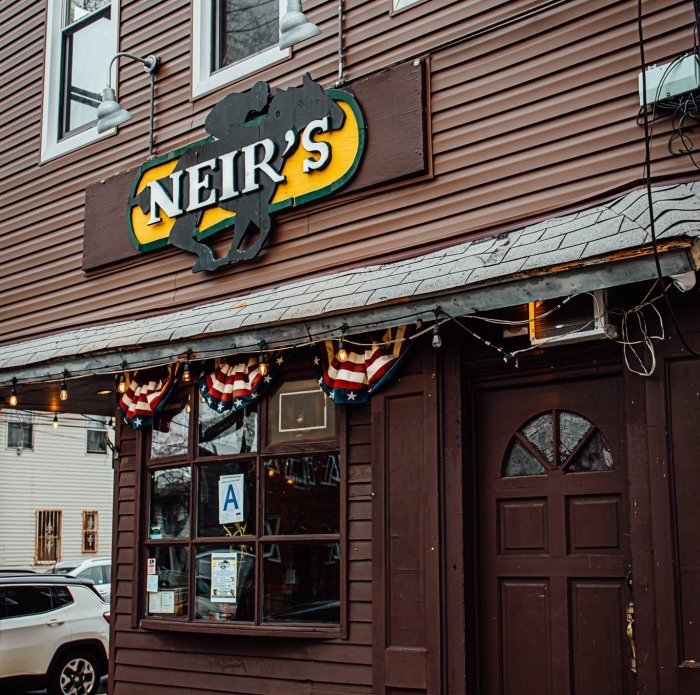Murray Berger and his wife moved to Kew Gardens in 1957. Theyd fallen in love with its suburban charm.
"We thought it was an oasis then," he said of the mostly single-family-home neighborhood.
But through the years, Berger, a former president of the Kew Gardens Civic Association, has seen those homes replaced by apartment rises and multi-family townhouses that, he said, ruin the character of the neighborhood.
The neighborhoods transformation is the result of zoning regulations created in 1961 by the City Planning Department. During that citywide undertaking, areas of Kew Gardens and other parts of Queens were zoned non-contextually. Much of zoning allowed for greater variation on homes and for higher densities than what was in the area at the time. For example, in Kew Gardens, instead of R2 and R3 regulations, which would have kept development congruous with single-family, detached homes, portions of the neighborhood received R5 and R7 zoning, which allows for larger buildings and attached designs.
As a result, residents and preservationists say, it gives developers incentive to swoop in to popular neighborhoods, purchase homes, and replace them with more profitable multi-family dwellings that pay no mind to traditional characteristics.
"We had wonderful places on Talbot Street, but we have lost a lot of it to development," said Sylvia Hack, a former chairperson and member of Community Board 9, who, along with Berger and other residents, has been trying to have Kew Gardens re-zoned for the past 10 years. "Kew Gardens has always been a community that people want to put roots down. If thats not worth saving then I dont know what is."
The zoning problem created in 1961 is not limited to Kew Gardens. It is affecting neighborhoods all over the borough.
"We dont want that to happen to Richmond Hill," said Nancy Cataldi, president of the Richmond Hill Historical Society, fearful her neighborhood will suffer the same fate. Cataldi is the proud owner of her neighborhoods distinguishing feature: a Victorian home.
Richmond Hill is the oldest planned community in Queens, which dates back the early 1900s. The neighborhoods homes are beautiful, detached, one- to two-family occupancies that hang back from the streets. Cataldi says the homes were built for open space.
But, like Kew Gardens, the neighborhoods zoning is for a higher density than what has been built in the past. Its R3-1 zoning allows for attachments and for houses to be built up both characteristics not in tune with Victorian designs. With the growing popularity of the neighborhood houses now have an asking price of $500,000 or more developers have zeroed in on the area. Theyve begun to purchase homes only to raze them and put up three houses in their place. The result is a sprouting of attached houses that extend to the limits of the propertys boundaries erasing any notion of breathing room and any notion of context in a neighborhood.
"It creates a totally different style," said Cataldi. "Its a brick wall up against your face."
As an example, Cataldi cites a Victorian house at 86-45 110th Street which was recently purchased and is undergoing extensions to be turned into a multiple occupancy.
According to preservationists, like Paul Graziano, an urban planning consultant who lives in Flushing, there are a few reasons for the incongruous zoning regulations instituted in 1961. At the time, the city had a population of eight million, but it expected the amount to swell to 16 million. So, the city padded areas with higher zoning regulations to support an influx that never came. Though it rose briefly, the citys population has stayed relatively the same. Another reason was that when City Planning looked at neighborhoods, it was not inclined to making spot zoning regulations. An area with just single family homes was easily marked as R1, R2 or R3. But, blocks with mixed residencies of single-family homes and apartment complexes were zoned higher, rather than make a distinction between the two.
Today, however, with the realization that the city is not reaching the 16-million-people mark anytime soon and with a new City Planning administration in place under Mayor Michael Bloomberg, which is more amenable to examining contextual zoning issues in Queens neighborhoods, may have a better chance at keeping their character.
Kew Gardens, which has waited for 10 years, is now in the preliminary stages of a review by City Planning. Due to its proximity to Kew Gardens, Richmond Hill, which applied three years ago for contextual zoning, was added to the review. Led by concerned residents like Berger, Hack and Cataldi, volunteers have conducted surveys of Kew Gardens and Richmond Hill to see if City Plannings records match what the actual neighborhoods looks like. Now City Planning is conducting its own study. Then, its recommendations for re-zoning will go through ULURP, a public hearing process where a planning commission, the City Council and Community Board 9 will have to approve the changes.
The process is long. Though the City Planning Department says most contextual zoning reviews are successful, they can take months to complete. Moreover, since the City Planning Department is understaffed, it can only review so many neighborhoods at a time, which partially explains Kew Gardens long wait on the list.
To help expedite the process for other neighborhoods seeking contextual zoning, Graziano has undertaken an independent survey of northeast Queens.
Funded with a small sum of money from Councilmanic District 19, Graziano has examined, since this past July, northeast Queens neighborhoods like Bayside, Flushing and College Point, where zoning is often higher than the density of the town. He is producing a report that has four goals: to examine contextual zoning, to make suggestions on fine tuning existing zoning text, to find restrictive deeds on houses, and to compile a list of neighborhoods that should apply for historic district status.
Aside from City Planning addressing contextual zoning, Graziano said that restrictive deeds on houses are another weapon neighborhoods can use to fight developers. Restrictive deeds that run with the land forever trump the zoning regulations of a neighborhood and have won court cases. Neighborhoods, he said, can also apply for historic district status with the citys Landmarks Preservation Commission (This will be discussed in next weeks issue).
The goal of the study, Graziano hopes, is to make new development fit with existing development. He will meet this Friday with civic groups from northeast Queens to discuss his findings so far. He identifies four areas College Point, Central Bayside, Clearview West Bayside and Central Whitestone that are in deep need of re-zoning.
When he finishes the study, in approximately four months, he hopes that other parts of Queens will take note and do the same.
He suggests that developers and the city should take note as well for, he believes, when neighborhoods lose the character that made them so desirable, they also lose their residents.
"People can accept gradual change, but the change that is happening here is jarring," he said.
Graziano said that Queens has long held a status as a middle-class borough, and the city needs it.
"If New York City wants to remain a solvent place, it should retain the middle class," he said. "If you dont retain these neighborhoods, you are going to drive people out."
































